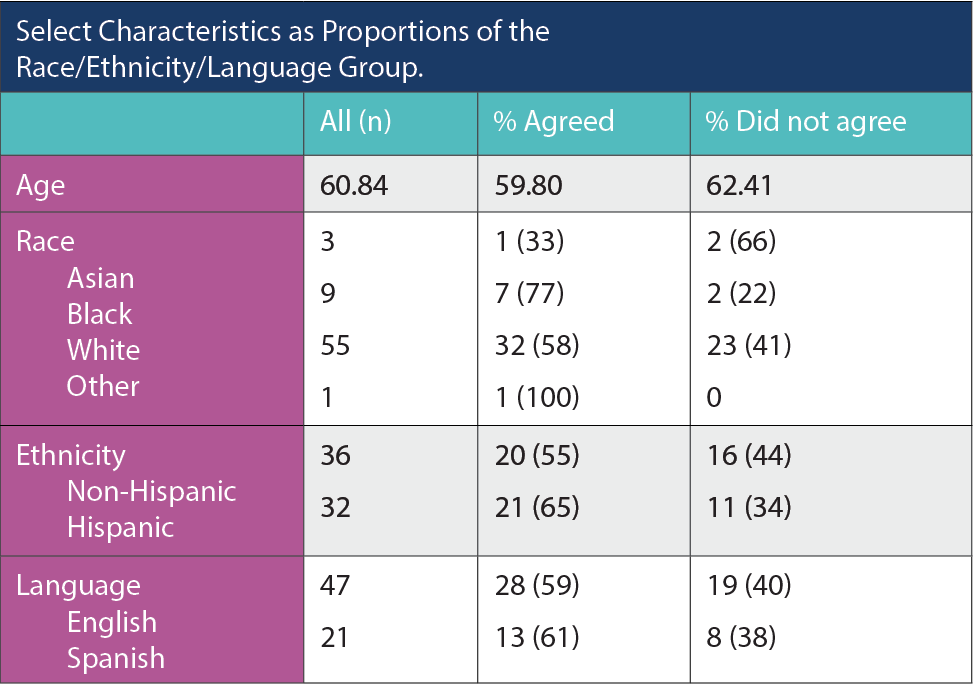59 Acceptability of Microbiome Sampling-Based Surgical Oncology Research in Minority Breast Cancer Patients
Background
Clinical research participants are too often not representative of populations most affected by cancer or those with the highest burden of disease. Women of color are underrepresented in surgical oncology research. Miami offers a unique population as a majority-minority city, which allows greater sampling of underrepresented groups. Through a feasibility analysis of an ongoing study, we sought to challenge the historical dogma that non-White or non-English–speaking patients are less likely to agree to participate in surgical research.
Methods
Women undergoing breast surgery were approached to participate in a prospective study. Our primary outcome was “consent to participate” and secondary outcome was willingness to participate in future microbiome research. Data description and analysis were performed (SAS vs 27.0.1.0).
Results
Selected Characteristics as Proportions of the Race/Ethnicity/Language Group

Univariate models showed that non-White (OR, 1.318; 95% CI, 0.378-4.588) or Hispanic (OR, 1.978; 95% CI, 0.784-4.989) patients were not more likely to decline to participate than their White counterparts. The combined minority (non-White, non-Hispanic) model showed an increased likelihood of participating (OR, 95%). Multivariate analysis showed similar results while controlling for age and language. Univariate analysis for our second outcome showed that patients who are a minority are less likely to participate in future microbiome clinical research compared with their White counterparts (OR, 95%), but Hispanic patients are more likely to participate in future microbiome clinical research compared to their White counterparts (OR, 95%).
Conclusion
Non-White, non-Hispanic patients are more likely to participate in surgical research, and most patients in our diverse cohort would continue to participate in microbiome research. By ensuring they are actively included in clinical trials, we can continue to elucidate differences in presentation and lessen discrepancies in treatment. All eligible patients should be approached to be included in clinical trials regardless of race, ethnicity, or primary language and without the assumption that they will decline to participate.
